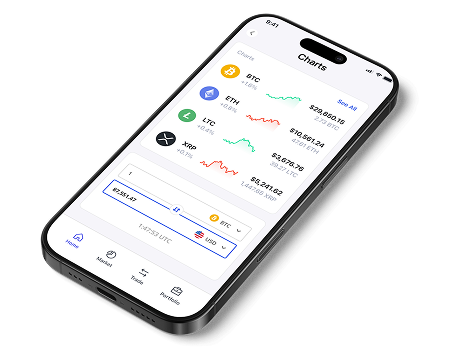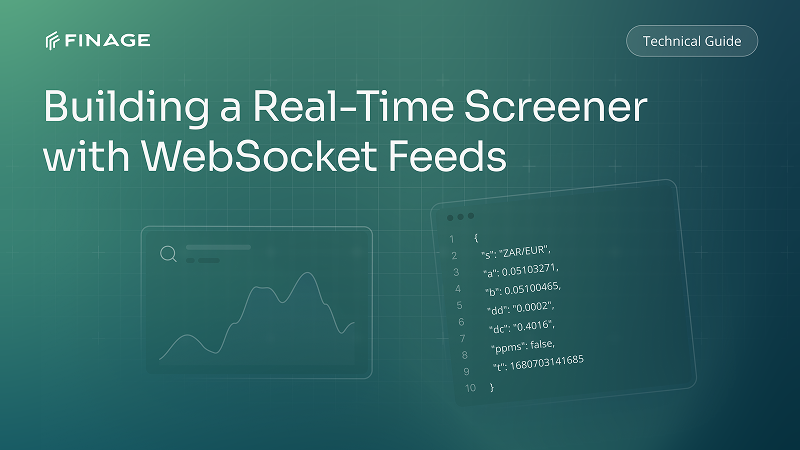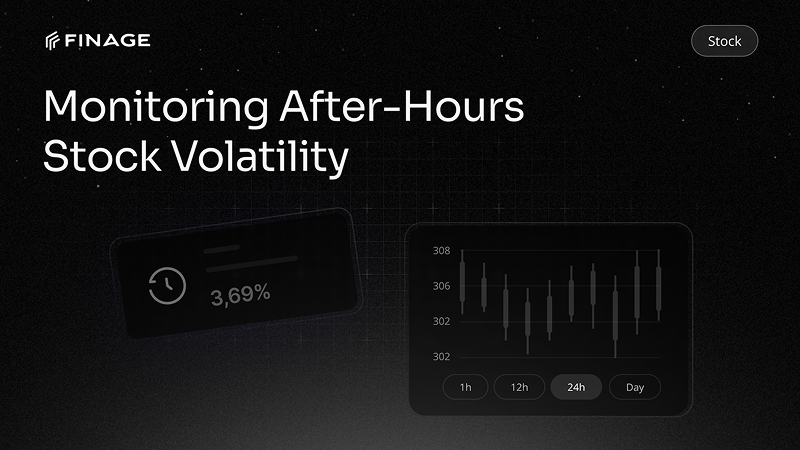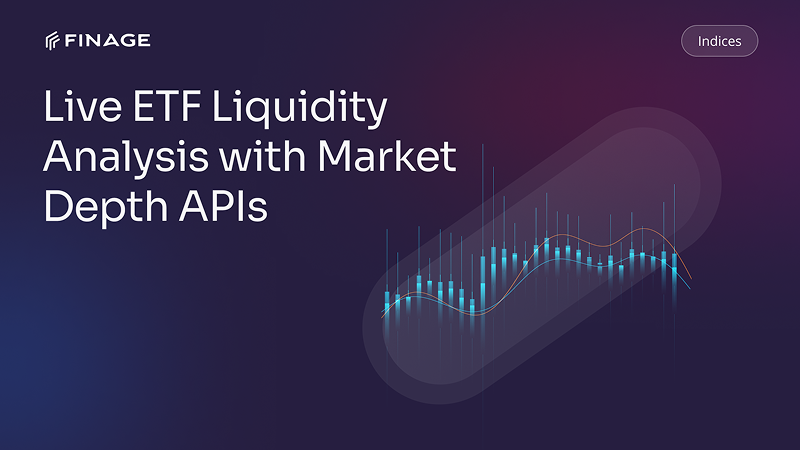Fintech Business Models in 2025: API-First, Data-Centric, and Scalable
7 min read • July 27, 2025

Introduction
The fintech space isn’t just growing, it’s evolving. Fast.
What once started as a wave of disruptive apps and neobank experiments has matured into a highly competitive, infrastructure-driven ecosystem. By 2025, the rules of building a successful fintech product will have changed. It’s no longer about just having a great idea or a clean UI. It’s about having the right fintech business model, one that’s flexible, efficient, and designed to scale.
Today’s most forward-thinking teams are building API-first platforms, leveraging real-time data as a product engine, and designing architectures that scale from day one. These aren’t just tech choices, they’re business strategies.
In this blog, we’ll explore what defines a modern fintech business model in 2025 and how product teams can align their technical architecture with long-term market success.
Table of Contents
- The Evolution of the Fintech Business Model
- Why API-First Architecture Is Now Non-Negotiable
- Data as the Core Revenue Engine
- What Scalability Looks Like in 2025
- How Finage Enables Future-Proof Business Models
- Final Thoughts
1. The Evolution of the Fintech Business Model
Back in the early 2010s, launching a fintech startup often meant building a sleek app, connecting to a bank, and offering a smoother user experience than legacy institutions. The business model? Mostly transactional, fee-based, and tied to front-end innovation.
Fast forward to 2025, and the landscape looks radically different.
A modern fintech business model isn’t just about delivering better UX; it’s about owning infrastructure, monetizing data, and embedding financial services directly into other platforms.
Here’s how the model has evolved:
From Product to Platform
Fintechs are no longer building isolated tools. They’re building platforms that others can build on. Think API marketplaces, white-label solutions, and modular finance.
From Fee-Based to Data-Driven
Rather than relying solely on transaction fees or subscriptions, many fintechs are monetizing insights, offering analytics, forecasting tools, or compliance data as paid products.
From Vertical to Embedded
Financial services are being woven into non-financial apps (e.g., lending in e-commerce, insurance in ride-hailing). This shift has created entirely new revenue streams and user journeys.
From Disruption to Infrastructure
The most valuable fintechs today don’t compete with banks; they power them. They provide the pipes, not just the tap.
This shift isn’t just semantic. It reflects a deeper alignment between technical architecture and business strategy. In 2025, the fintechs that thrive are the ones that see data, scalability, and API flexibility not as technical challenges, but as the foundation of their entire business model.
2. Why API-First Architecture Is Now Non-Negotiable
In today’s fintech landscape, APIs are no longer a backend detail; they are the business.
An effective fintech business model in 2025 starts with an API-first approach. This means designing your platform with APIs at the center, not as an afterthought. And it’s not just about developer convenience. It’s about speed, flexibility, and revenue.
Here’s why API-first isn’t optional anymore:
Speed to Market
When every core service, authentication, pricing, and analytics, is built as an API, your team can ship faster. Iteration is smoother. Integration with partners or clients takes hours, not weeks.
Partner and Ecosystem Growth
APIs open up your platform to new business models. Fintechs today are turning their internal tools into external revenue streams, charging for access to payments, data, and even compliance processes.
Customer-Centric Customization
An API-first model lets clients build exactly what they need. They’re not forced to use rigid interfaces. They use your backend to craft their own experience, and stay longer because of it.
Infrastructure Portability
As you scale, you’ll need to connect with multiple systems across cloud environments, regulatory jurisdictions, and customer stacks. APIs make this transition seamless.
Put simply, if your fintech product isn’t API-first, it’s not future-ready. The best fintechs in 2025 are those whose APIs are treated not just as a tool, but as the product itself.
3. Data as the Core Revenue Engine
Fintechs used to think of data as a byproduct. In 2025, it's the product.
The most resilient fintech business models are those that don’t just use data to support decision-making; they turn it into a source of value creation. And not just internally, but for their customers as well.
Here’s how data is driving business outcomes across fintech:
Analytics as a Paid Layer
Whether it's risk scoring, market predictions, or behavioral insights, many platforms now offer premium analytics as a standalone product. What used to be back-office tools have become client-facing revenue drivers.
Personalized Services
Real-time and historical data allow fintechs to deliver hyper-personalized experiences, custom lending rates, targeted insurance bundles, or real-time investment nudges that feel tailor-made.
Smarter Automation
Trading bots, fraud detection, and onboarding flows all get significantly better when powered by rich data feeds. This improves user experience and reduces operational costs.
Data-as-a-Service (DaaS)
For some fintechs, data itself is the business. They license access to unique financial datasets, real-time pricing, ESG scores, regulatory indicators, and charge based on volume or usage.
The shift to data-centric models isn't just about technology; it’s strategic. It’s about understanding that your biggest asset isn’t just the product you built. It’s the information you generate, structure, and deliver better than anyone else.
4. What Scalability Looks Like in 2025
Scalability used to mean handling more users. In 2025, it means handling more complexity with less effort.
A modern fintech business model isn't truly viable unless it can scale across regions, regulations, use cases, and data volumes, without rewriting the whole stack.
Here’s what true scalability looks like today:
Modular Infrastructure
Successful fintechs design systems with plug-and-play components. Want to add a new payment rail? A lending feature? A market data stream? Each should be an isolated, deployable unit, not a rebuild.
Multi-Market Readiness
Operating in more than one region means more than just translation. Your product must adapt to different compliance environments, tax structures, and financial protocols, without breaking core functionality.
Elastic Data Handling
Can your architecture ingest and process sudden spikes in trading activity or pricing updates? Scalability means performance doesn’t suffer when demand surges.
Developer-Friendly Expansion
As your platform grows, so will the teams building on top of it. Clear documentation, unified APIs, and self-service onboarding are essential to keep that growth sustainable.
The difference in 2025? Scalability isn’t about getting big. It’s about staying lean while expanding fast. That’s the bar every modern fintech must meet to compete and survive.
5. How Finage Enables Future-Proof Business Models
Building a modern fintech platform isn’t just about vision; it’s about execution. And execution depends on the right infrastructure.
That’s where Finage comes in.
Finage provides the core building blocks for any fintech business model built for 2025 and beyond. Whether you’re a startup launching a data-driven investing app or an enterprise scaling across global markets, Finage delivers the flexibility, performance, and simplicity you need.
Here’s how Finage supports forward-thinking fintech teams:
Unified API Access
With Finage, you don’t need multiple providers for stocks, forex, crypto, and indices. Everything comes through one clean, consistent API, making development faster and easier from day one.
Real-Time and Historical Market Data
Finage’s infrastructure delivers both instant data streams and deep historical records, helping you power everything from live dashboards to long-term backtests.
Developer-Ready Documentation
Finage’s API documentation is built for speed. Clear, consistent, and structured to support fast onboarding and smooth integration.
WebSocket Streaming for Real-Time Precision
Need real-time updates? Finage’s WebSocket APIs provide low-latency, stable connections that keep your app responsive, even during market volatility.
Scalable, Secure Infrastructure
Finage is designed to grow with your business. Whether you’re handling thousands or millions of data calls per day, performance remains consistent and secure.
More than a data provider, Finage is a strategic partner for fintech teams building what’s next. Because the tools you choose today shape the products you’ll launch tomorrow.
Final Thoughts
The most successful fintech platforms in 2025 won’t be the ones with the flashiest UX or the most funding; they’ll be the ones with the smartest foundation.
An effective fintech business model today is API-first, data-centric, and engineered for scale. It’s not just about delivering financial services, it’s about becoming infrastructure that others can rely on.
That requires more than code. It requires the right data partner.
Finage gives your team the real-time market feeds, developer-friendly APIs, and unified infrastructure to build scalable, future-proof products. Whether you’re just shaping your MVP or scaling a global platform, Finage meets you where you are and grows with you.
Because innovation moves fast. And your infrastructure should never be the reason you fall behind.
Claim Your Free API Key Today
Access stock, forex and crypto market data with a free API key—no credit card required.

Stay Informed, Stay Ahead
Finage Blog: Data-Driven Insights & Ideas
Discover company news, announcements, updates, guides and more


